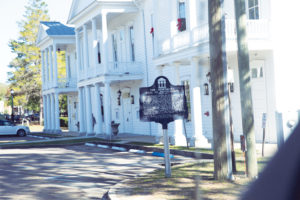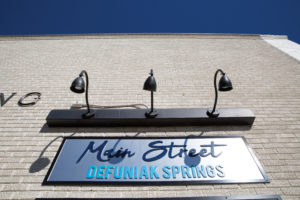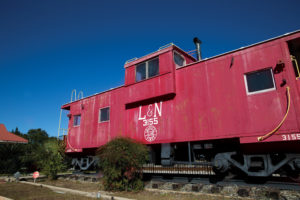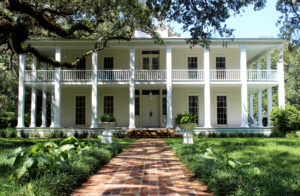Much of Walton County’s charm lies in its sense of timelessness. It is steeped in rich history which has remained culturally relevant as the area has evolved. Whether you’re exploring along Scenic 30A or north of the Choctawhatchee Bay, there are plenty of treasures to discover.
Any tour of South Walton’s historic buildings should include the Wesley House, nestled in the heart of Eden Gardens State Park. This stunning Victorian belle was built in 1895 by timber baron William Henry Wesley and his father-in-law, Simeon Strickland. In 1963, Lois Genevieve Maxon purchased the house and began a full antebellum restoration. On Christmas Eve five years later, she donated it to the state of Florida, along with 10 and a half acres of surrounding land.
Guided tours are available Thursday through Monday, hourly from 10 a.m. to 3 p.m. You can marvel at all the fine details, such as the original yellow heart pine floors and glass pocket windows, along with an extensive collection of antique furniture dating from 1790 through the late 1800s American and European Empire period.
The house is also complemented by a beautiful reflecting pool and huge live oaks draped in moss.
Local folklore claims that Hogtown Bayou got its name from passels of wild hogs that roamed the woods here. However, it was destined for more civilized inhabitants. In the late 1800s, Charles Cessna began developing this area southeast of Choctawhatchee Bay into the community of Santa Rosa Beach. By the early 1900s, Hogtown Bayou had become a thriving town center, with a population around 1,200. It was home to two turpentine mills, a sugar cane syrup factory and a cannery, along with several other businesses. A general store and hotel welcomed visitors arriving by steamboat.
A crop disaster and hurricane may have marked the beginning of the end for the prosperous town, but it’s still a peaceful place to visit today. Cessna Landing is a beautiful park that allows for fishing, picnics and fun by the water. And the nearby Bayou Arts Center of Walton County is a vibrant home for classes, events and workshops.
The history is just as rich north of the bay. In fact, a visit to DeFuniak Springs can leave you a little disoriented (in a good way). You may feel as if you’ve wandered into a living period piece from 19th century New England.
Named after Colonel Frederick DeFuniak, an executive of the Louisville-Nashville Railroad, the town served as a small way station along the Pensacola & Atlantic Line. Col. DeFuniak was an Italian immigrant known for his strong work ethic, and legend has it that he won the right to name the town in a card game.
Nearly 200 historic buildings surround Lake DeFuniak, about 40 of which are noted in the National Register of Historic Places. Classic Victorian homes are prevalent, and even many of the newer homes offer an Old World elegance – constructed in styles such as Queen Anne and Colonial Revival. Built in 1896, St. Agatha’s Episcopal Church (144 Circle Drive) showcases what is known as the Carpenter Gothic style.
A huge catalyst for growth in DeFuniak Springs was the local Chautauqua Assembly. This was part of a very popular national movement in the late 19th century, which centered on adult education and enrichment through an organized exchange of ideas and entertainment.
After the first such assembly was established by Methodists in Ohio, a second created in New York state in 1874 became the model. It was located on the shores of Chautauqua Lake, thus coining the name that would follow to many similar incarnations around the country.
With the New York Chautauqua leaders searching for a winter retreat, Col. DeFuniak and other railroad heads invited them to visit the refined community they were planning here around a beautiful, spring-fed lake. In 1885 the original campus was opened.
They eventually built the 4,000-seat Chautauqua Hall of Brotherhood for gatherings and performances. Teachers, lecturers, performers and preachers would enthrall audiences with their areas of expertise. These included luminaries such as Harriet Beecher Stowe, William Jennings Bryan and Red Cross founder Clara Barton.
Today you can tour Circle Drive, taking an informative walking tour of this once-gated resort. Eighteen detailed signs carry you through the storied history. These are complemented by a map of the 1884 campus, offering a great then-and-now sense of perspective.




